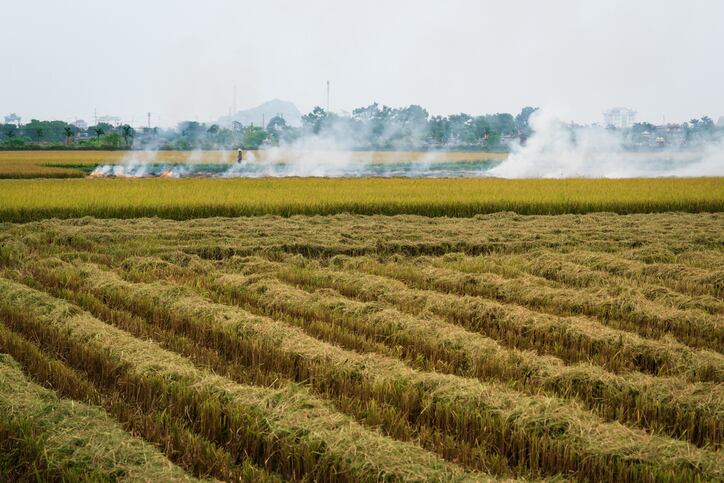Rice straw is a crop waste byproduct and each year across Asia 300 million tonnes of it go up in smoke when burnt after harvest. This releases emissions and air pollutants that triple risks of increased respiratory diseases and accelerate climate change.
India and the Philippines are the world’s second and eighth largest rice producers respectively and together they produce 130 million tonnes of both rice and straw per year.
The Renewable, Inclusive Carbon-negative Energy (RICE) project is an international collaboration that aims to reduce carbon dioxide emissions and unlock renewable energy from rice straw in the two countries.
The project will draw on world-class expertise to reduce carbon dioxide emissions from large and heavy equipment and facilities. It is focused on developing innovative solutions to address the challenges of decarbonizing heavy industries and infrastructure.
Researchers at Aston University in the UK will be contributing to the project, which is funded by the UK Research and Innovation (UKRI) Global Challenges Research Fund.
Aston University is collaborating with two companies: Indian-based Takachar, and Philippines-based Straw Innovations.
Takachar makes small-scale, low-cost, and portable machines that can attach to tractors and convert agricultural waste into valuable bioproducts like biofuels, fertilisers, and chemicals. Straw Innovations is an agriculture-based venture that aims to make use of leftover rice straw to increase farmer income.
“Takachar will develop a super-sized version which is 10 times bigger than their current device, make it adaptable to rice mills, and will send it to Straw Innovations, so the two firms can test out different business models for farmer adoption and benefit,” explained Dr Mirjam Röder, from Aston University’s Energy & Bioproducts Research Institute.
“Straw Innovations will also send their machines from the Philippines to India mid-project and the two countries will test out different business models for farmer adoption. And for the first time they will tap into the heat produced in the waste process to dry rice, instead of using diesel or kerosene.”
Creating a more efficient system for carbon negative energy and soil improvement for rural communities across Asia
Aston University researchers will then assess the sustainability of the project, calculating the greenhouse gas emissions savings of the new systems introduced by Straw Innovations and Takachar.
They will also engage with the farming community and rural stakeholders to quantify how the systems can increase farmer incomes, equality of opportunity, food security and decarbonisation benefits, whilst highlighting any trade-offs.
“Environmentally, rice produces 48% of all global crop emissions, due to methane from flooded fields,” added Dr Röder. “This is halved when the straw is removed and reduced further when its carbon is stored in biochar. We are aiming for carbon negative which means removing carbon dioxide from the atmosphere or sequestering more CO₂ than is emitted.”
Craig Jamieson from Straw Innovations added: "We’ve been pioneering rice straw work with the team at Aston University for the past seven years. We're delighted to continue that strong partnership and widen it to include Takachar in this new project.
“Takachar is a leader in making biochar from crop residues and our partnership with them is very strategic. We look forward to combining our new improved straw harvesting technology with their scaled-up biochar production. It will be a step change, creating a new, more efficient system for carbon negative energy and soil improvement for rural communities across Asia.
“Our combined solutions can significantly move the needle in reducing crop residue collection costs and biochar production costs for carbon removal."


